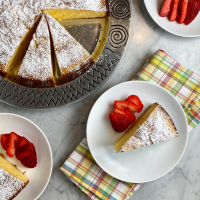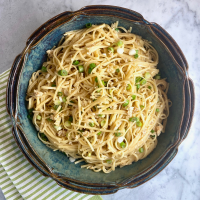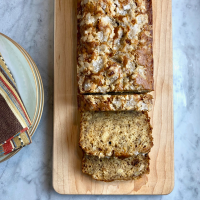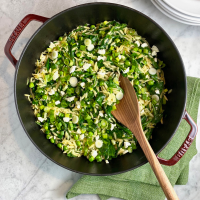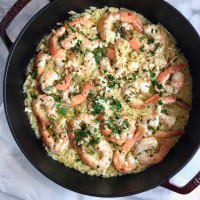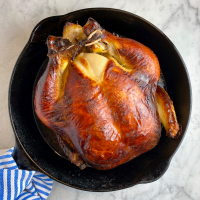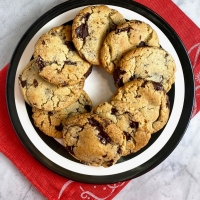 This is the second dessert I was able to make with the bounty of Damson plums I received in my CSA share. The plum compote was a great way to preserve the plums for a later use; it keeps for up to two weeks in the refrigerator.
This is the second dessert I was able to make with the bounty of Damson plums I received in my CSA share. The plum compote was a great way to preserve the plums for a later use; it keeps for up to two weeks in the refrigerator.
The sweet compote paired very nicely with the lightly sweetened cream filling and crust. The quantity of compote used to garnish the top of the tart can be adjusted to affect the overall sweetness of the finished tart.
This recipe was adapted from Gourmet, via Epicurious.com. The pastry recipe is from Martha Stewart. Store-bought pie crust could easily be substituted. I have been eating the leftover compote drizzled over vanilla ice cream!
Yield: One 10-inch tart, Serves 6 to 8
For the Pastry:
- 2 1/2 cups all-purpose flour
- 1 tablespoon sugar
- 1 tsp coarse salt
- 2 sticks plus 2 tablespoons cold unsalted butter, cut into small pieces
- 1/4 to 1/2 cup ice water
For the Compote:
- 1 pound Damson plums or prune plums
- 1 3/4 cups sugar
- pinch of coarse salt
- 2 tablespoons white wine or citrus juice
- 1 Turkish or 1/2 California bay leaf
For the Cream Filling:
- 1 cup heavy cream
- 1/2 vanilla bean, split lengthwise
- 1 tablespoon granulated sugar
- 1/2 teaspoon grated lemon zest
- Make pastry dough: Pulse flour, sugar, and 1 teaspoon salt in a food processor until combined.
- Add butter, and pulse until mixture resembles coarse meal, about 10 seconds.
- Drizzle 1/4 cup ice water evenly over mixture. Pulse until mixture holds together when pressed between 2 fingers (dough should not be wet or sticky). If dough is too dry, add more water, 1 tablespoon at a time, and pulse.
- Shape dough into 1 large disk, and wrap in plastic wrap. Refrigerate until firm, at least 1 hour. (Dough can be refrigerated overnight or frozen for up to 3 months. Let chilled dough stand for 10 minutes and frozen dough thaw before using.)
- Make the compote while pastry chills: Bring whole plums, sugar, salt, wine/citrus juice, and bay leaf to a simmer in a heavy medium saucepan over medium-low heat, covered, stirring occasionally until sugar has dissolved (be careful juices don’t boil over). (I used an enameled cast iron saucepan.)
- Reduce heat to low and simmer, covered, stirring occasionally, until plums fall apart, about 30 minutes.
- Transfer to a bowl and chill, uncovered, until cold, then cover.
- Discard pits and bay leaf, then add a little confectioners sugar to taste if desired.
- Prepare the pastry: Between layers of plastic wrap, roll dough into an approximately 12-inch round, enough to cover a 10-inch tart pan bottom and sides.
- Prick bottoms all over with a fork, then freeze tart pan on a cookie sheet until firm, at least 1 hour.
- Preheat oven to 425°F with rack in middle, preferably on convection.
- Place chilled tart crust in oven. Turn oven temperature down to 400°F and bake until golden all over, 11 to 13 minutes.
- Transfer tart pan to a rack to cool completely, then remove shell from pan.
- Make the cream filling: Put cream in a large bowl, then scrape seeds from vanilla bean into cream.
- Beat in sugar and zest with an electric mixer until cream just holds stiff peaks.
- Fold in about 2 tablespoons plum compote, then spread cream in the prepared tart shell.
- Serve topped with some of remaining compote (you will have a lot left over).
Note: Compote keeps, covered and chilled, 2 weeks.
One Year Ago:
Two Years Ago:
Three Years Ago:













